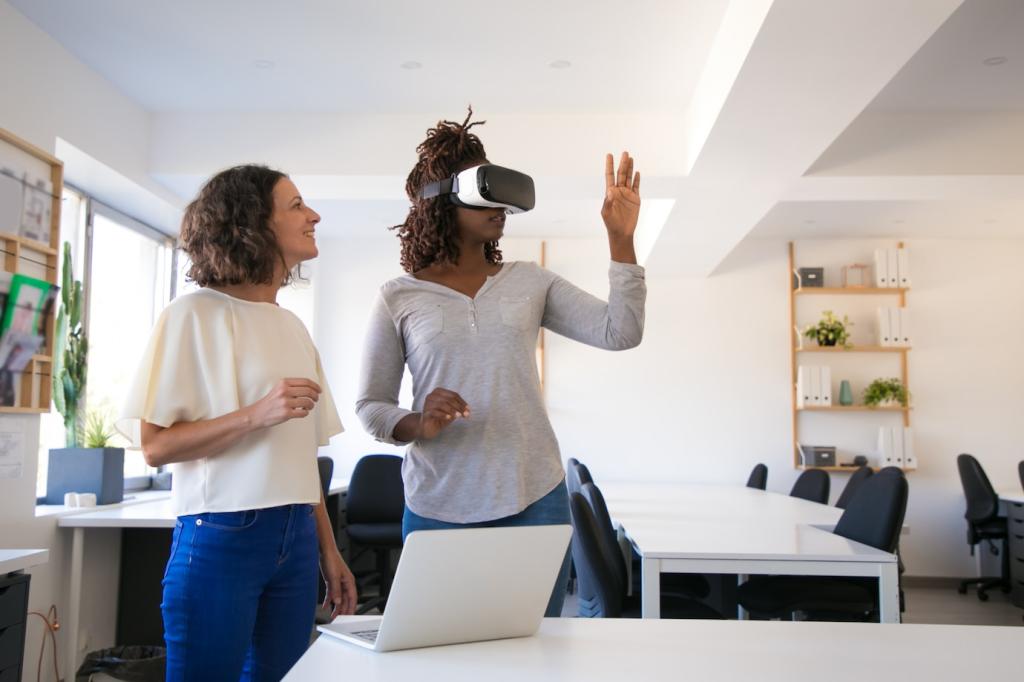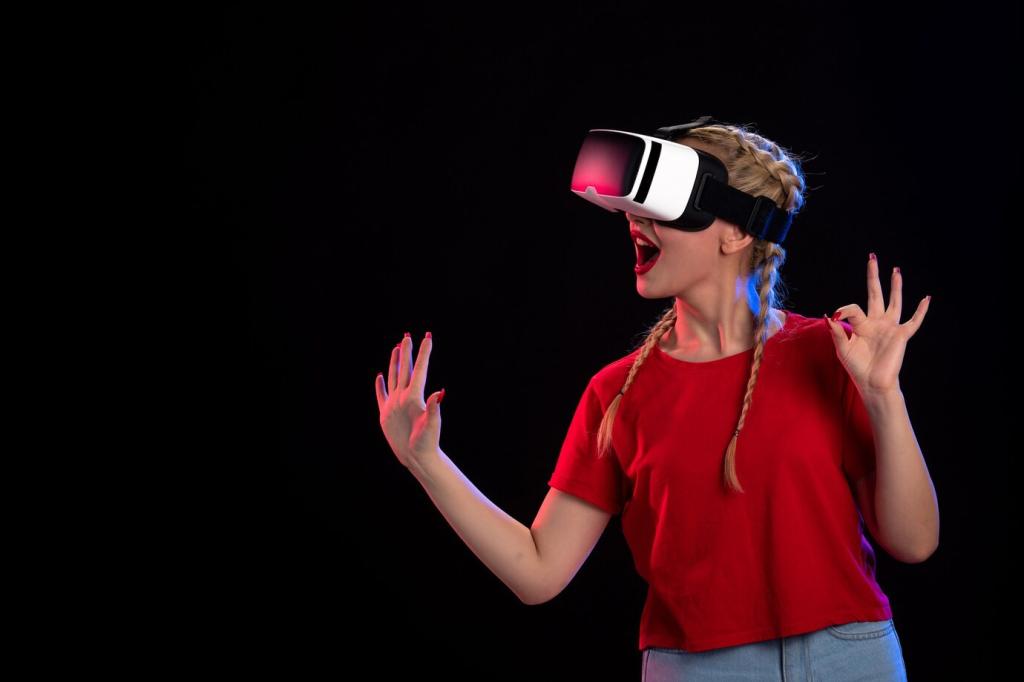Advancements in Virtual Reality for Language Education in English
Virtual reality (VR) is transforming the landscape of language education, offering learners immersive environments where they can practice and enhance their English proficiency in ways never before possible. By leveraging cutting-edge technology, VR provides dynamic, interactive experiences that mimic real-life situations, fostering improved engagement and accelerated learning. This web page delves into the latest advancements in virtual reality for English language education, exploring the practical applications, pedagogical benefits, and future possibilities that this innovative approach brings to both learners and educators.

Previous slide
Next slide
Personalized Learning Pathways
Adaptive Content Delivery
Modern VR applications incorporate sophisticated data analytics to assess each learner’s strengths, weaknesses, and progress. Based on this analysis, the system dynamically adjusts lesson plans, introduces appropriate vocabulary, and focuses on relevant grammatical structures. Personalized learning ensures that users remain neither overwhelmed nor under-challenged, optimizing retention and motivation. Over time, adaptive delivery helps learners master essential skills at their own pace, fostering a deep and sustainable understanding of English.
Tailored Feedback and Assessment
Immediate, customized feedback is a cornerstone of effective language acquisition—something VR delivers through interactive assessments. Speech recognition and AI-driven analysis evaluate pronunciation, grammatical accuracy, and context-appropriate usage, offering constructive recommendations for improvement. This personalized approach enables learners to address specific challenges in real time, set achievable goals, and track their progress through detailed performance metrics. The result is a more focused, efficient path toward language mastery.
Support for Diverse Learning Styles
VR caters to a wide range of learning preferences, whether visual, auditory, or kinesthetic, by offering multimodal experiences. Learners can engage with interactive visuals, manipulate virtual objects, and participate in activities that require spoken, written, or movement-based responses. This flexibility accommodates individual learning styles, ensuring that each student can engage with English in a way that resonates most effectively for them. As a result, VR supports more inclusive and accessible language education.
Breaking Down Geographical Barriers

Virtual reality removes traditional barriers to education, enabling learners to join live, interactive English classes from anywhere with an internet connection. VR classrooms bring together students from different countries, fostering rich exchanges and authentic communication. The global reach of these classrooms not only increases access to expert language instruction but also exposes learners to varied perspectives and cultural nuances in English usage, making for a more robust and practical learning experience.
Enhancing Pronunciation and Listening Skills
VR technology incorporates spatial audio, allowing learners to experience English as it sounds in natural contexts. This immersive listening environment helps students attune their ears to nuances in pronunciation, intonation, and stress patterns. By practicing in 3D audio scenarios—such as crowded streets, busy cafes, or group discussions—learners develop sharper listening skills and greater confidence in their ability to understand a variety of real-life situations.
Fostering Active Engagement and Motivation
By incorporating game mechanics such as achievements, levels, and rewards, VR turns language practice into an enjoyable activity. Learners embark on quests, complete missions, and challenge themselves in ways that make English study feel like play rather than work. The competitive and fun elements of gamification enhance motivation, transform attitudes toward language practice, and encourage consistent participation, which is critical for long-term progress.
Previous
Next

Improving Accessibility and Inclusivity
Support for Learners with Disabilities
VR offers tailored solutions for individuals with visual, auditory, or mobility impairments through adjustable interfaces, audio descriptions, and alternate input methods. These accessibility features help ensure that all learners can participate actively in English lessons and benefit from the immersive environment. By reducing barriers and accommodating unique needs, VR brings equitable language education within reach for a broader spectrum of students.
Bridging Socioeconomic Gaps
As VR hardware becomes more affordable and internet access expands, the technology offers new opportunities for students in underserved regions to access high-quality English instruction. Virtual classrooms can connect learners who might otherwise lack exposure to native speakers or experienced teachers, promoting social mobility and global integration. This democratization of education supports fairer outcomes and helps close the achievement gap.
Language Support for Multilingual Learners
VR platforms increasingly provide multilingual support, allowing learners to navigate instructional settings in their native language while gradually increasing their exposure to English. This scaffolded approach helps new immigrants, refugees, and international students feel comfortable as they adapt to English-language environments. By providing clear instructions, translation features, and culturally responsive resources, VR ensures a smoother transition and more effective learning for all.
